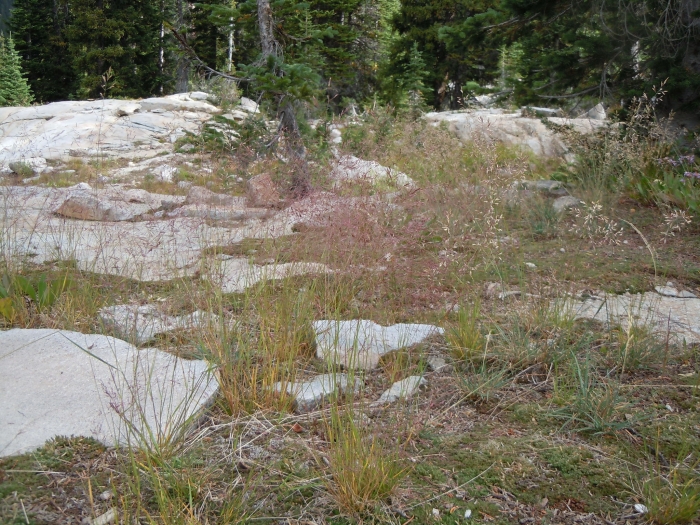Idaho Bent Grass
(Agrostis idahoensis)
Idaho Bent Grass (Agrostis idahoensis)
/
/

© Matt Lavin
CC BY 4.0
Image By:
© Matt Lavin
Recorded By:
Copyright:
CC BY 4.0
Copyright Notice:
Photo by: © Matt Lavin | License Type: CC BY 4.0 | License URL: http://creativecommons.org/licenses/by/4.0/ | Uploader: mattlavin | Publisher: iNaturalist |













Estimated Native Range
Summary
Agrostis idahoensis, commonly known as Idaho bent grass, is a perennial herbaceous plant native to western North America, including regions from Alaska to California and eastward to Colorado. It is particularly adapted to alpine and subalpine environments, as well as meadows, open woodlands, and grasslands. This grass typically forms short, dense tufts reaching up to 12 inches in height. Its fine, thready leaves and delicate, wispy inflorescences with small, inconspicuous spikelets are characteristic features. Idaho bent grass has a relatively short flowering season, usually in the summer months, and the flowers are not showy but have a subtle beauty in their simplicity.
Idaho bent grass is valued for its role in soil stabilization and promoting ecological diversity. It is often used in restoration projects and erosion control due to its dense root system. In cultivation, it requires minimal maintenance and can thrive in a variety of soil types, though it prefers well-drained conditions. It is also tolerant of a range of light conditions, from full sun to partial shade. While not typically used for ornamental purposes, it can be an effective ground cover in naturalized areas or meadows. There are no major diseases or pests that significantly affect this species, making it a reliable choice for challenging sites.CC BY-SA 4.0
Idaho bent grass is valued for its role in soil stabilization and promoting ecological diversity. It is often used in restoration projects and erosion control due to its dense root system. In cultivation, it requires minimal maintenance and can thrive in a variety of soil types, though it prefers well-drained conditions. It is also tolerant of a range of light conditions, from full sun to partial shade. While not typically used for ornamental purposes, it can be an effective ground cover in naturalized areas or meadows. There are no major diseases or pests that significantly affect this species, making it a reliable choice for challenging sites.CC BY-SA 4.0
Plant Description
- Plant Type: Grass
- Height: 0.5-1.5 feet
- Width: 1-2 feet
- Growth Rate: Moderate
- Flower Color: N/A
- Flowering Season: Spring, Summer
- Leaf Retention: Deciduous
Growth Requirements
- Sun: Full Sun, Part Shade
- Water: Medium
- Drainage: Fast, Medium
Common Uses
Bird Garden, Erosion Control, Low Maintenance
Natural Habitat
Alpine and subalpine environments, meadows, open woodlands, and grasslands
Other Names
Common Names: Idaho Redtop, Idaho Bent
Scientific Names: , Agrostis idahoensis, Agrostis borealis var. recta, Agrostis filicumis, Agrostis tenuiculmis, Agrostis tenuiculmis var. recta, Agrostis tenuis, Agrostis tenuis var. erecta, Agrostis tenuis var. erecta, Podagrostis tenuis,
GBIF Accepted Name: